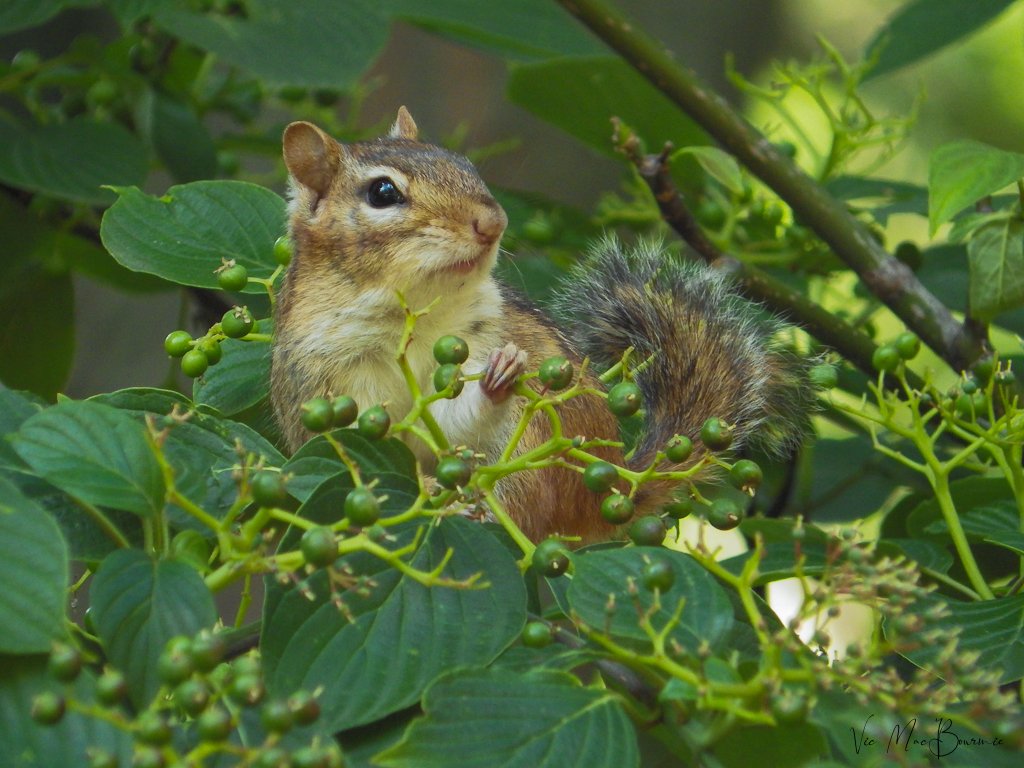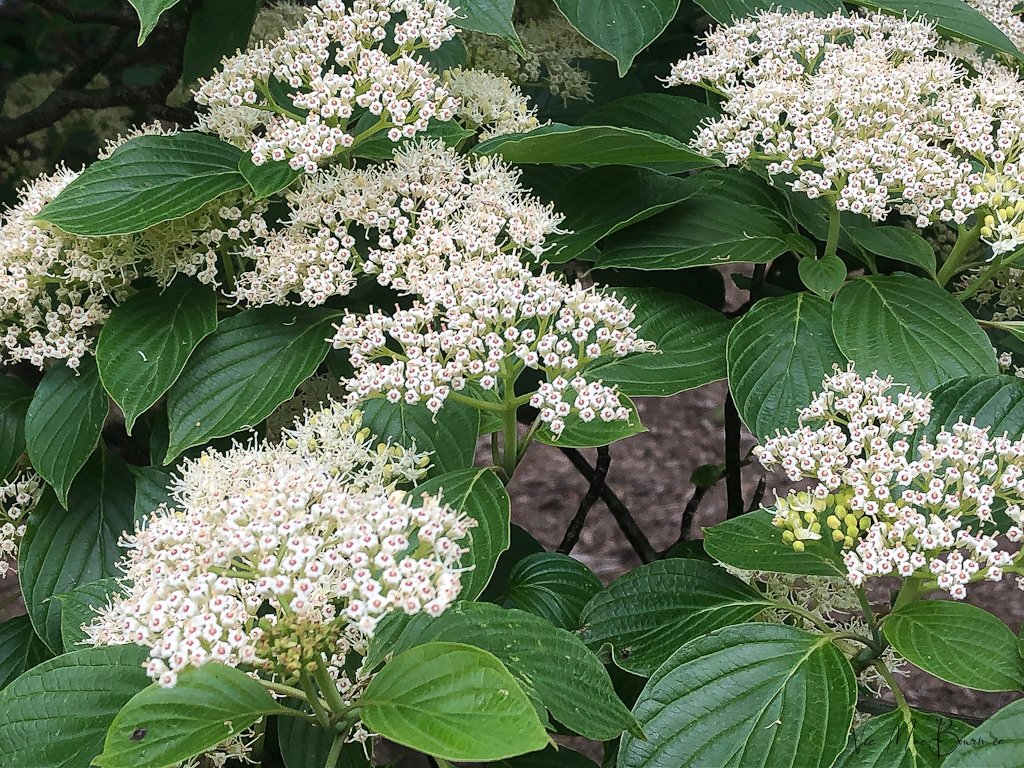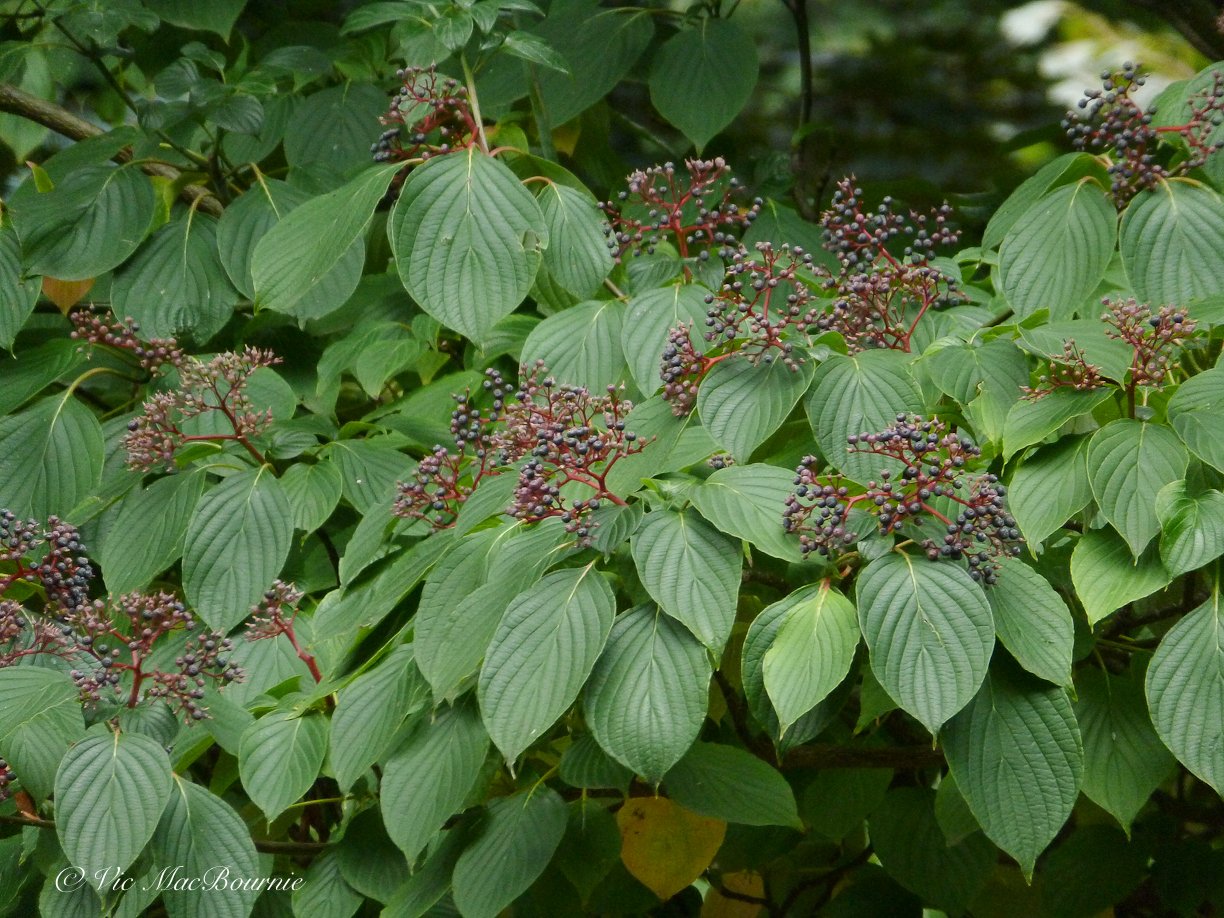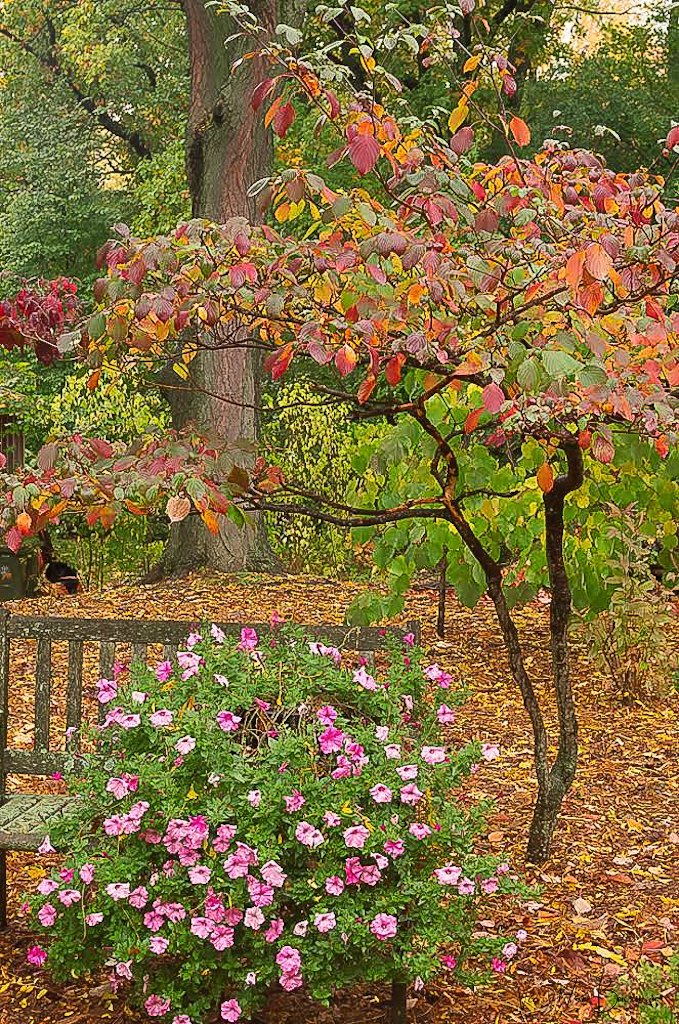Pagoda Dogwood: Shade-loving native tree for woodland, wildlife
My love affair with dogwoods actually had its roots not with the showy Flowering Dogwood, but with a lesser known native dogwood – Cornus Alternifolia.
You may know it as Pagoda Dogwood or Alternate-Leaved dagwood if you know it at all. Trust me, if you don’t already know about Cornus Alternifolia, you need to get to know this outstanding little gem of a dogwood. My first experience with it was in our previous home where I planted it outside the office window where I could admire it and its avian visitors spring, summer, fall and throughout the winter.
When we moved to our current home more than 23 years ago, the first tree/shrub I planted was another Pagoda Dogwood, and it continues to impress me to this day with its longevity and strong presence in the garden throughout the seasons.
Be sure to read my article on six of the best native dogwoods.
The native to the Carolinian forest is not always the showstopper, taking a back seat to the more showy Flowering Dogwood, but it’s like a younger sibling fighting hard to unseat Cornus Florida for top spot in the forest.
Cornus Alternifolia (Pagoda Dogwood) is a semi-colonizing 25-foot tall shrub or tree with a strong horizontal layering habit, that spreads by both seeds and layering. It grows in partial shade to full sun in moist, well-drained rich loamy, slightly acid soil.
This little chipmunk wasn’t waiting around for the birds to help themselves to the berries of the Pagoda Dogwood in the backyard. She searched out the ripened blackish berries as soon as they were ready for eating.
How big do Pagoda Dogwoods get?
Cornus Alternifolia or Pagoda Dogwood is a small tree or shrub reaching anywhere from 15-25 feet tall with an impressive spread of between 12 to about 32 feet.
Is the Pagoda native to areas of Ontario and the United States?
It’s native to Ontario and Northeastern United States and elsewhere including parts of the upper Midwest and even into parts of Minnesota.
How can you tell a Pagoda Dogwood?
In nature, you can spot a Cornus Alternifolia by its characteristic horizontal branching habit, creamy umbrel-style flowers, black berries and deeply veined, ovate leaves that turn a lovely shade of redish, orange in fall. Also, its Latin name is derived from the alternate position of the leaves on the stems.
Without a doubt, however, its most impressive feature is its truly elegant horizontal branching habit that gives the tree its beautiful shape in the woodland garden and makes it a valuable addition to a Japanese-style garden.
More of my posts on Dogwoods
For more information on Dogwoods, please check out my other posts listed here:
Dogwoods: Find the perfect one for your yard
Flowering Dogwood: Queen of the Woodland garden
Cornus Kousa: Impressive non-native for the woodland garden
Our Pagoda Dogwood in full bloom. Each of these florets will form berries that are particularly attractive to a host of birds from Bluebirds to Cardinals. The berries start off green and eventually turn a blackish-blue as they ripen.
When does the Pagoda Dogwood flower and produce berries
The Pagoda Dogwood’s creamy, umbrel-like flowers bloom from May through July depending on location, followed by clusters of black fruit in July that attract a host of birds from the Eastern Bluebird to Scarlet Tanagers just to name a few. Chipmunks and red squirrels are also regular visitors and will strip the berries as fast as they ripen.
Pagoda Dogwood berry clusters are loved by both birds and chipmunks in our yard.
What is a Pagoda Dogwood’s Lifespan?
Our original Cornus Alternifolia is still doing well after more than 23 years in the garden. It’s no surprise that it is still gracing our woodland considering the longevity of these tough little trees. Pagoda Dogwoods can live between 50 - 150 years old so there is a good chance it will still be around for a few years yet. A second Pagoda Dogwood was planted a few years ago in the understory of two very old crabapple trees located not too far from the original Pagoda.
What birds are attracted to the Pagoda Dogwood?
The list of avian visitors is almost endless and include the highly sought after Eastern Bluebird, a variety of Vireos and Thrushes as well as Cedar Waxwings, Gray Catbirds, Cardinals, Scarlet Tanagers, Eastern Kingbirds, Rose-Breasted Grossbeaks and Yellow-Bellied Sapsucker.
Our original 23-year-old Pagoda Dogwood in spring bloom showing off its multitude of blooms. The umbrel-type, creamy flowers are not the show stoppers of the more showy Flowering Dogwoods, but they hold their own in the woodland as a lovely understory tree.
The same 23-year-old Pagoda Dogwood in its fall coat.
Is Cornus Alternifolia a host plant?
The Pagoda, like most native plants, is a host plant to a number of Lepidoptera (caterpillars or larvae of moths and caterpillars) including: The Fragile Miner Bee, Summer Azure butterfly, the impressive Cecropia Moth, Fragile White Carpet Moth and Unicorn Caterpillar.
What Native bees does Cornus Alternifolia attract?
The spring and summer flowers provide nectar and pollen for a number of our native bees including: The bright flourescent Sweat Bees, Miner Bees, Masked Bees and Hover Flies.
What other species is the Pagoda Dogwood related to:
Dogwoods represent a large species ranging from the impressive and equally beautiful Flowering Dogwood (Cornus Florida) to the diminutive Bunchberry (Cornus Canadensis) with its familiar dogwood flowers in minature form growing in large swaths as a ground cover. Other related species include: Red-Osier Dogwood, Rough-leaved, Grey, silky and Round-Leaved.
What cultivars are available for the Pagoda Dogwood?
Using the native, non-cultivar or species tree/shrub is always a solid choice if you want to attract or provide food for the largest variety of wildlife in your garden. There are, however, popular cultivars of Cornus Alternifolia if you are looking for specific traits in the plant.
Golden Shadows: This brightly-coloured variety (zones 3-8) from Proven Winners sports variegated leaves that help the plant stand out in a shady area of the garden where it reaches heights of 10-12 feet with an equal spread. The highly successful company describes the plant as: “bright yellow with a splotch of emerald green in the cenre, taking on pink tones on the new growth in cool weather. Spring sees the plant graced with lacy white blooms. Beneath all this beauty lies a tough North American native that can grow in many difficult conditions; Golden Shadows Pagoda Dogwood is especially noteworthy for its ability to thrive in light shade, its bright foliage bringing colour and beauty to otherwise dim sites.”
C. alternifolia 'Argentea' is known as silver pagoda dogwood and is similar to Golden Shadows but sports a green and white variegation rather than the green and gold.
Cornus controversa: Sometimes called the Wedding Cake Tree, it is a spectacular, extremely showy giant pagoda dogwood with a mature height of 60 feet. When this tree is in flower it is simply a spectacular site. Grows in zones 6-9 and is the winner of the prestigious Award of Garden Merit from the Royal Horticultural Society.





